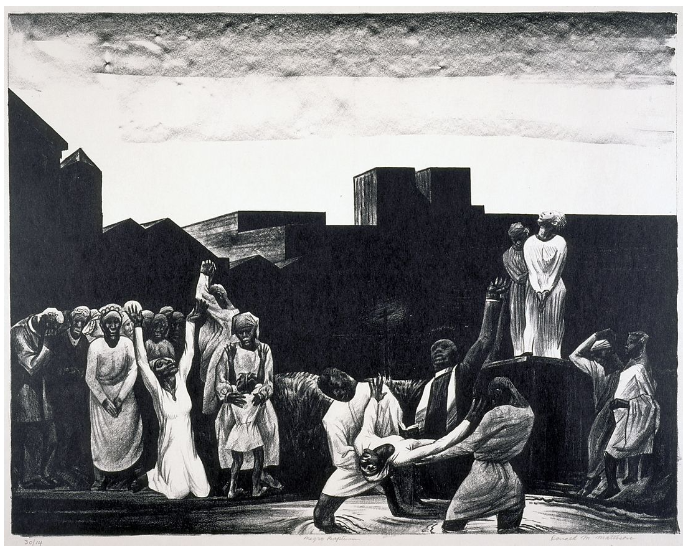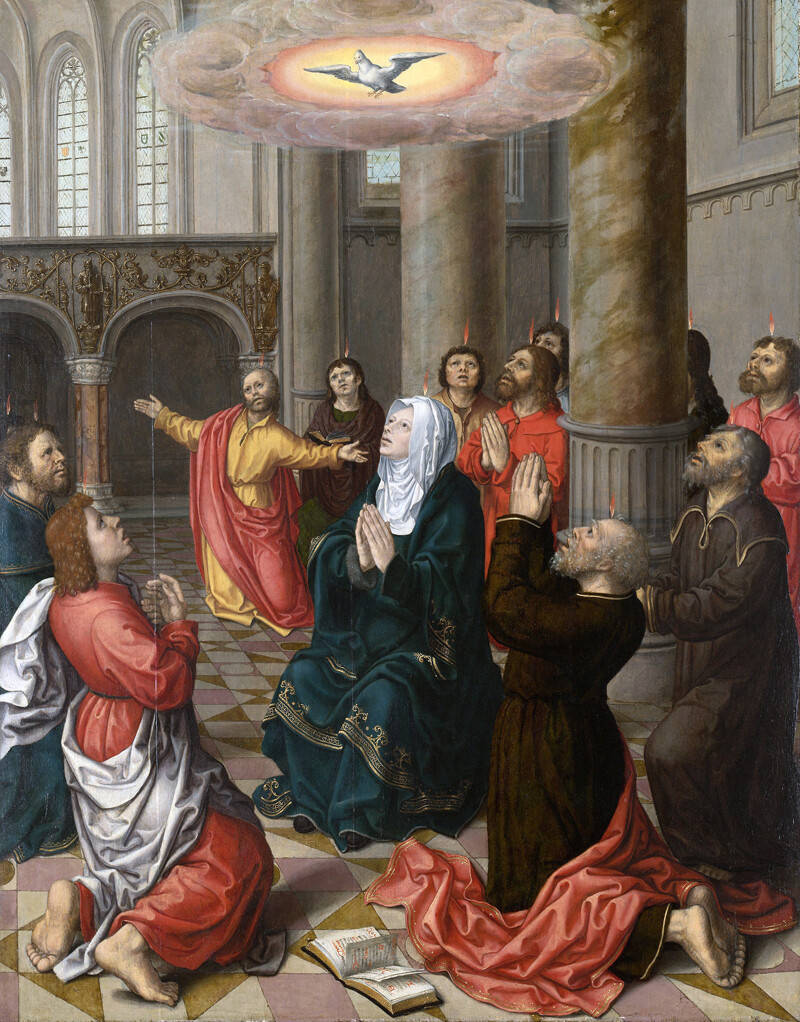Ask a Theologian: Baptism
 Negro Baptism by Donald Mattison (American, 1905-1975). Courtesy of the Indianapolis Museum of Art at Newfields.
Negro Baptism by Donald Mattison (American, 1905-1975). Courtesy of the Indianapolis Museum of Art at Newfields.
Dear Theologian,
Why does our Church baptize babies? I can understand how meaningful Baptism is for an adult person or even a child. But what sense does it make to administer this sacrament to an infant who cannot know what it means? What effect do we think this has on a baby?
Wondering
Dear Wondering,
If we are to understand the meaning of Infant Baptism, we must first examine the rich and profound meaning of Adult Baptism, for this is the primary and normative form of the sacrament.
Let’s begin with some basic principles of sacramental theology. According to the Catechism of the Book of Common Prayer, “The sacraments are outward and visible signs of inward and spiritual grace, given by Christ as sure and certain means by which we receive that grace.” [1]
The use of an “outward and visible sign” to express something spiritual, personal and intangible is actually very common in human life. Because we are physical beings, we need to “embody” our thoughts, feelings and decisions. So, people smile, frown, shake hands, carry flags, wear rings.
In some cases, the sign does not merely refer to something personal and spiritual, but really does convey the unseen reality and make it able to be sensed, felt, touched and celebrated. The exchange of wedding rings by a bride and groom, for example, is a concrete, visible sign of their life-long commitment to each other.
From this perspective, we can better understand why the Church celebrates sacraments. They are symbolic rituals that embody and make tangible the spiritual reality of our profound relationship with God through Jesus the Christ in the power of their Spirit.
The initiative is from God, who calls human persons into the relationship. This possibility is offered as a generous, free, undeserved gift. Hence, we call it “grace.” The human response to this gracious offer is called “faith.”
The beginning of Christian faith-living comes by being initiated into the “koinonia” (communion) of the crucified and risen Jesus, the fellowship of new humanity that has been created by His life, death, and resurrection and the gift of the Holy Spirit.
In the case of an adult, this happens through a process of “catechesis” and preparation for Baptism, the sacrament of initiation. It involves a lot of learning ––not merely of doctrines, but also of “habits of the heart,” ways of behaving, choosing and loving. One gradually acquires the vision and values and purpose of the community that is the Church of Jesus.
When a person is judged to be ready, he or she receives the sacrament of Adult Baptism––a solemn, public celebration of that person’s entry into the fellowship of Jesus. This symbolic ritual expresses, at one and the same time, both the reality of God’s saving grace offered in Christ and the human person’s free choice to respond in faith.
It is the natural symbolism of water that conveys the rich meaning of this event. Water can be used for washing or cleansing. So it is easy to see how being immersed in water could show outwardly the mystery of the forgiveness of sins and the washing away of the old life of evil and unbelief. “Wash me thoroughly from my iniquity, and cleanse me from my sin.”(Ps 51:2)
But water can also symbolize death and destruction. To be submerged in water over your head is to be in danger of drowning. And uncontrolled, rushing water can carry away everything and drown anyone in its path. So, going down into the water can show outwardly the mystery of dying to one’s old self and one’s old way of life, as one is identified with the death of Christ. And coming up again out of the water can show outwardly the mystery of rising up to a new life in the power of the Spirit, as one is identified with the resurrection of Christ. (Cf. Rom 6:3-4.)
In the light of this symbolism, Baptism appears as a momentous event of surrender to God’s grace and abandonment to God’s power, letting go of one’s old way of life, and making a profound personal commitment to a new way of life.
That is why adults who wish to take this step are first asked whether they renounce all evil, accept Jesus as their savior, put all their trust in his grace and love, and promise to follow and obey him as their Lord. Furthermore, they are asked whether they believe in God the Father, God the Son, and God the Holy Spirit. And they are invited to make certain promises, which we call “the Baptismal Covenant.” [2]
But if all this is true of an adult being baptized, what are we to say of baptizing infants?
It is quite clear that an infant is not yet capable of making an act of faith or of committing self to a way of life. Nor does he or she yet have any personal sins to repent of or any “old way of life” to turn away from. None of this applies.
What is symbolized in Infant Baptism, above all, is the gracious initiative of God choosing and calling this person to belong to Christ and to become a member of his Church––long before he or she is capable of making any response to God.
What is also symbolized by baptizing the baby is his or her incorporation (as infant) into the Church. But this makes sense only if the adults involved (parents, godparents, Church community) are truly committed to raise this child in the Christian faith. And that is why the parents and godparents are asked the same questions that are posed to an adult person seeking Baptism. For it is really their faith into which this child is to be initiated.
The practice of Infant Baptism is legitimate, however, only if the baptizing faith community takes very seriously its responsibility to foster the spiritual development of the ones who have been baptized. The process of “catechesis,” which for an adult precedes the ritual of Baptism, will have to take place after Baptism for those baptized as infants. This is why Christian education and formation are of such crucial importance for our children and young people.
The practice of Infant Baptism without adequate Christian formation produces congregations of baptized people who have never undergone catechesis or initiation. This is a significant aspect of the present malaise of many Church communities.
Does baptizing an infant wrongly “pre-empt” his or her freedom to choose? Not really. When a person baptized as an infant reaches a point of sufficient maturity, he or she will need to make a choice either to affirm or repudiate the Baptism once received passively. Affirming one’s Baptism is a serious moral decision because it involves a commitment to live by the Baptismal Covenant. Without that kind of personal commitment, one has not yet entered into the fullness of Christian faith-living––whether baptized as an infant, a child, or an adult.
In Christ,
The Theologian
[1] BCP, p. 857.
[2] Cf. BCP, pp. 304-305.
The Rev. Wayne L. Fehr wrote a column for a previous version of the diocesan newsletter called "Ask a Theologian." He answered questions from ordinary Christians trying to make sense of their faith. Now he's back with a monthly column once again. You can find and purchase his book "Tracing the Contours of Faith: Christian Theology for Questioners" here.


 Pentecost from the workshop of Bernard van Orley
Pentecost from the workshop of Bernard van Orley